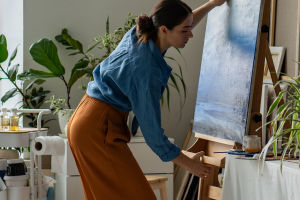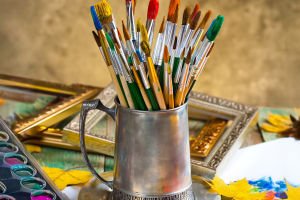Lykkers, visual culture surrounds our lives every day — from architecture and advertising to films and design. And yet, many learners might feel confused or even disinterested when first introduced to art history.
It's often seen as distant or overly academic. But diving into this subject opens a fascinating world that connects people, time periods, and ideas in a powerful and practical way.
Understanding the Foundations of Humanity
Art as the Earliest Human Expression
The first major leap that distinguished human beings from other species was creative expression. Long before any form of written language, drawing and visual storytelling were used to communicate and share experiences.
Handprints on cave walls are among the earliest forms of this expression — and they're not so different from the drawings children still make today. Art is deeply rooted in the human journey and identity.
Tracing Cultural Roots
Studying art from the past gives insight into how different communities lived, thought, and evolved. From early sculptures to grand architectural works, each piece tells a story of its time and place. Art is a mirror of human progress and imagination through the centuries.
Building a Well-Rounded Mind
A Tool for Expanding Knowledge
Art history adds depth to one's understanding of global cultures and ideas. It teaches how to interpret symbols, appreciate aesthetics, and understand messages communicated without words.
A broad knowledge of visual language can enrich learning across many areas of life — even in unexpected places like general knowledge games or creative problem-solving scenarios.
A Connection Between Subjects
Many subjects are interlinked with visual art — history, geography, science, literature, and even mathematics. For instance, learning about the Renaissance offers insights into historical events, scientific developments, and philosophical movements. Viewing literary works through illustrated art can offer new interpretations and spark curiosity.
Encouraging Awareness and Responsibility
Appreciating Cultural Heritage
Art history gives tools to recognize and interpret the artistic and architectural wonders in daily surroundings. Whether traveling abroad or exploring one's hometown, being able to understand and appreciate monuments, sculptures, or paintings adds value to every encounter.
This knowledge fosters awareness and encourages care for the artistic treasures found worldwide.
Preserving What Matters
True understanding leads to respect. Recognizing the value of artistic pieces helps prevent neglect or misuse. Communities that are educated in art history are more likely to protect and maintain their local landmarks and creative legacies.
Unleashing Creative Potential
Discovering Inner Creativity
No form of expression happens in isolation. Even the most innovative creators study what came before them. Understanding past artistic achievements can serve as inspiration for new ideas, techniques, and personal styles.
Everyone has the potential to explore creativity in their own way.
Finding a Personal Path
From sculpture and drawing to design and photography, exposure to various art forms helps individuals discover what resonates with them most. There's room for every kind of expression, and studying the past provides a rich toolkit to support that discovery.
Opening Career Opportunities
Not everyone chooses to create art, but there are many ways to work within this field. Roles such as tour guides, educators, curators, and conservators are just a few examples of careers that are enriched by a strong foundation in art history. These roles play a vital part in making creative culture accessible to the public.
Bringing People Together
Art goes beyond spoken communication. It allows people to connect across cultures, backgrounds, and experiences. Creative activities can promote teamwork, build confidence, and offer comfort, especially in educational or therapeutic environments. Exploring visual art provides a common ground that encourages inclusion and shared understanding.
In Conclusion
Art history is far more than dates and images; it's a dynamic subject that reveals how people have expressed their thoughts, dreams, and challenges throughout time.
For Lykkers seeking to better understand the world, strengthen their minds, or explore creative paths, this field offers a rich and rewarding journey. By studying it, one gains not only knowledge but also the tools to observe, interpret, and appreciate the beauty and meaning found all around.


